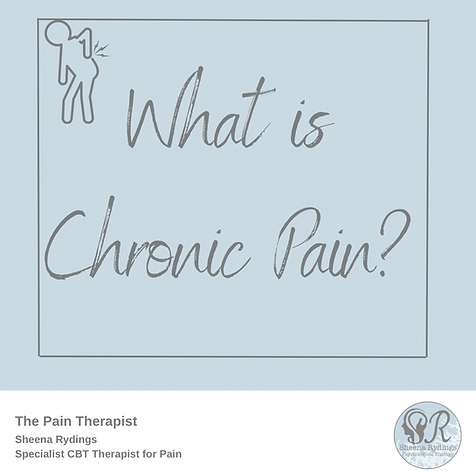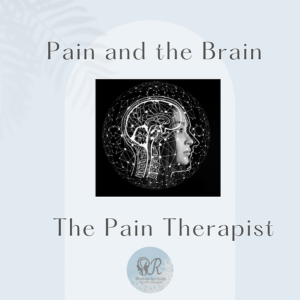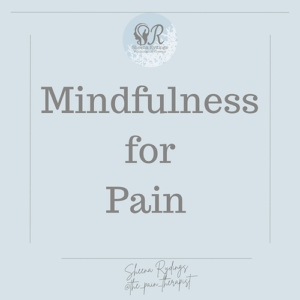Chronic Pain (or sometimes known as long term or persistent pain) is classified as a pain that last longer than 3 months and may not respond to usual medical treatment (NICE, 2021)
In July 2020, The International Association for the Study of Pain (IASP) revised the definition of Pain as follows:
“An unpleasant sensory and emotional experience associated with, or resembling that associated with, actual or potential tissue damage,” and is expanded upon by the addition of six key Notes and the etymology of the word pain for further valuable context.
- Pain is always a personal experience that is influenced to varying degrees by biological, psychological, and social factors.
- Pain and nociception are different phenomena. Pain cannot be inferred solely from activity in sensory neurons.
- Through their life experiences, individuals learn the concept of pain.
- A person’s report of an experience as pain should be respected.
- Although pain usually serves an adaptive role, it may have adverse effects on function and social and psychological well-being.
- Verbal description is only one of several behaviours to express pain; inability to communicate does not negate the possibility that a human or a nonhuman animal experiences pain.
Pain can be secondary to (caused by) an underlying condition e.g. arthritis or primary (no clear underlying condition, or the pain seems disproportionate to any observable injury or disease) Pain effects between 1/3 and 1/2 of the population in the UK- about 28 million people!
To explain pain simply- pain is produced by the brain. Receptors in nerves detect danger in the body, then signals sent to brain via spinal cord. When these signals are reached by the brain, these danger signal are analysed along with:
- Memory
- Attention
- Stress
- Environment
- Emotional state
The brain then decides how much pain we should experience, whether that is a lot, a little bit or a moderate amount. Chemicals released by the brain can amplify pain messages. With chronic pain, the nervous system is over sensitive and this is called “CENTRAL SENSITISATION”. Central sensitisation is an “amplification of neural signalling within the central nervous system that elects pain hypersensitivity” (Nijis et all, 2021). So as you can see, chronic pain is complex.
So, why do we need pain?
People often see pain as something bad when in actual fact pain is something that helps keep us alive. Pain is for survival- some people arenot born with ability to feel pain, this is called Congenital insensitivity to pain. This could lead to lots of problems such as not being able to detect if something is wrong internally such as a broken bone.
Pain can be helpful, but chronic pain it’s not always helpful!
Recent research and the advances in understanding pain means we have seen a shift from treating chronic pain from a medical model (i.e. medication and physio) to a more holistic nervous system based approach. This is called the biopsychosocial model of pain. (see image below)


Physiotherapists look at specific tailored exercises to improve functioning and movement and these are integrated with Cognitive Behavioural Therapy looking at the psychological and social impact of pain. It is important to look holistically meaning it is a effective way to capture the impact that pain has on our lives. To fully understand chronic pain, the image below captures all the different aspects of pain.
Chronic pain iceberg


Pain systems can malfunction, in chronic pain the nervous system goes into an over protective state which means the nerves switch on too easily and too much pain is produced. The pain system involves our whole body and works a bit like a computer system. As with all computer systems, they can go wrong.
Part of this process is impacted directly with the emotional centres in the brain. So, how we feel emotionally impacts our pain experience. If we feel angry, depressed or anxious, our pain experience will often be worse. Then with other emotions such as if we are feeling happy or joyful, our pain experience can be less and we feel much better at coping with the pain. Therefore the brain and emotions have a huge impact on our experience of pain. This is not to say that pain is in anyway ‘made up’ or ‘all in your head’, but is important to understand the pain is made in the brain and influenced by many other factors.
Chronic pain lasts months or years and can interfere with your ability to work, enjoy activities and engage in self care. If you have chronic pain or been experiencing pain for longer than 3 months and it is significantly impacting your mood, please talk to a healthcare provider or pain specialist. There are ways to manage your pain to help you towards living well with pain and living a valued led life. The key is to learn effective pain management which will mean that you can live a happy, fulfilling and meaningful life whilst living alongside pain. You can live WELL with pain!




